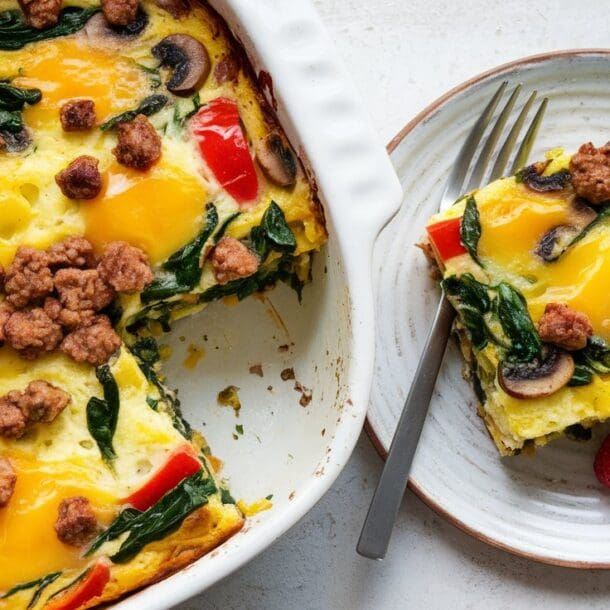
This website uses cookies to ensure you get the best experience on our website. View our Privacy Policy here.

Share this article via:
Please note: This website contains affiliate links. As an Amazon Associate, we earn from qualifying purchases at no additional cost to you.
.
Minimalist paintings are the perfect way to add a modern touch to your home without breaking the bank—or your patience.
If you’ve ever thought, I wish I could create my own art, but I can barely draw a stick figure, you’re in luck.
These DIY minimalist painting ideas are so simple, even a total beginner can make them look chic and intentional. Grab a canvas, some paint, and let’s get artsy.
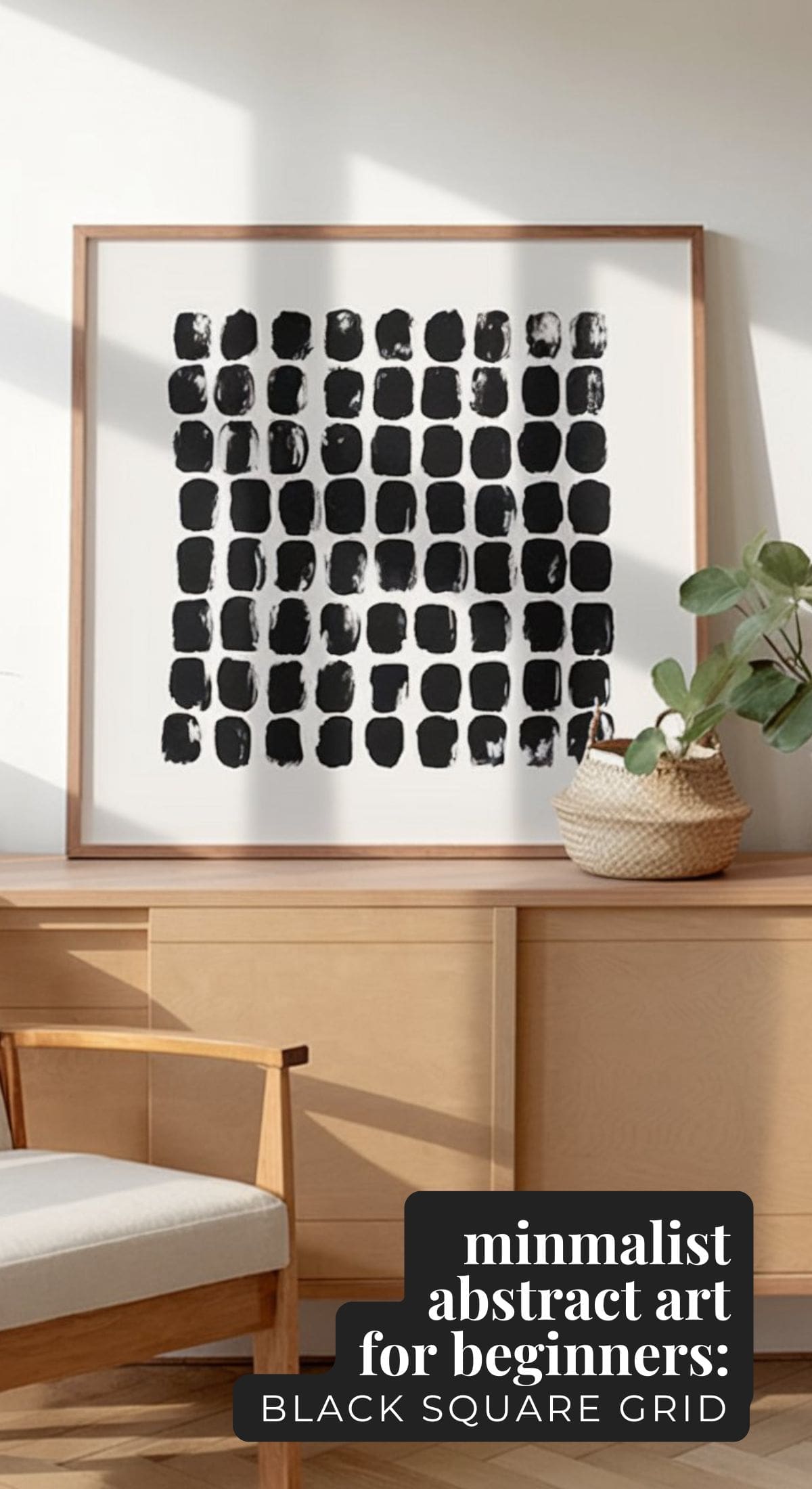
A single color on a white or black background—because sometimes, less really is more.
How to Create It:
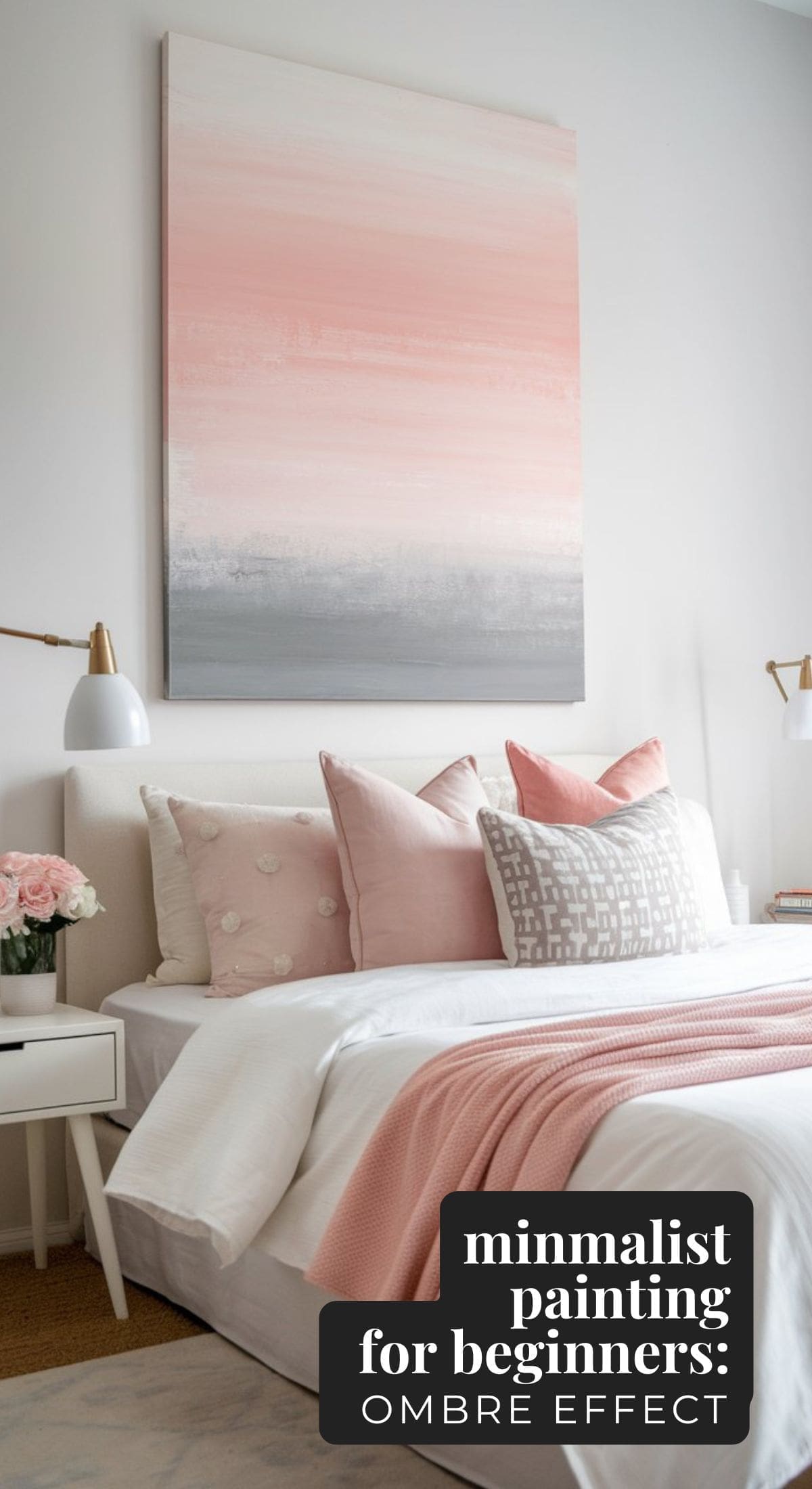
A subtle ombré effect that fades from one color to another, bringing soft, calming vibes to any room .The texture is soft and airy, resembling the horizon at dawn, making the piece feel light and dreamy.
PRO TIP: Add a little water to your acrylic paint or a matte medium to thin out the paint a bit. That will help you get that softer, blended look.
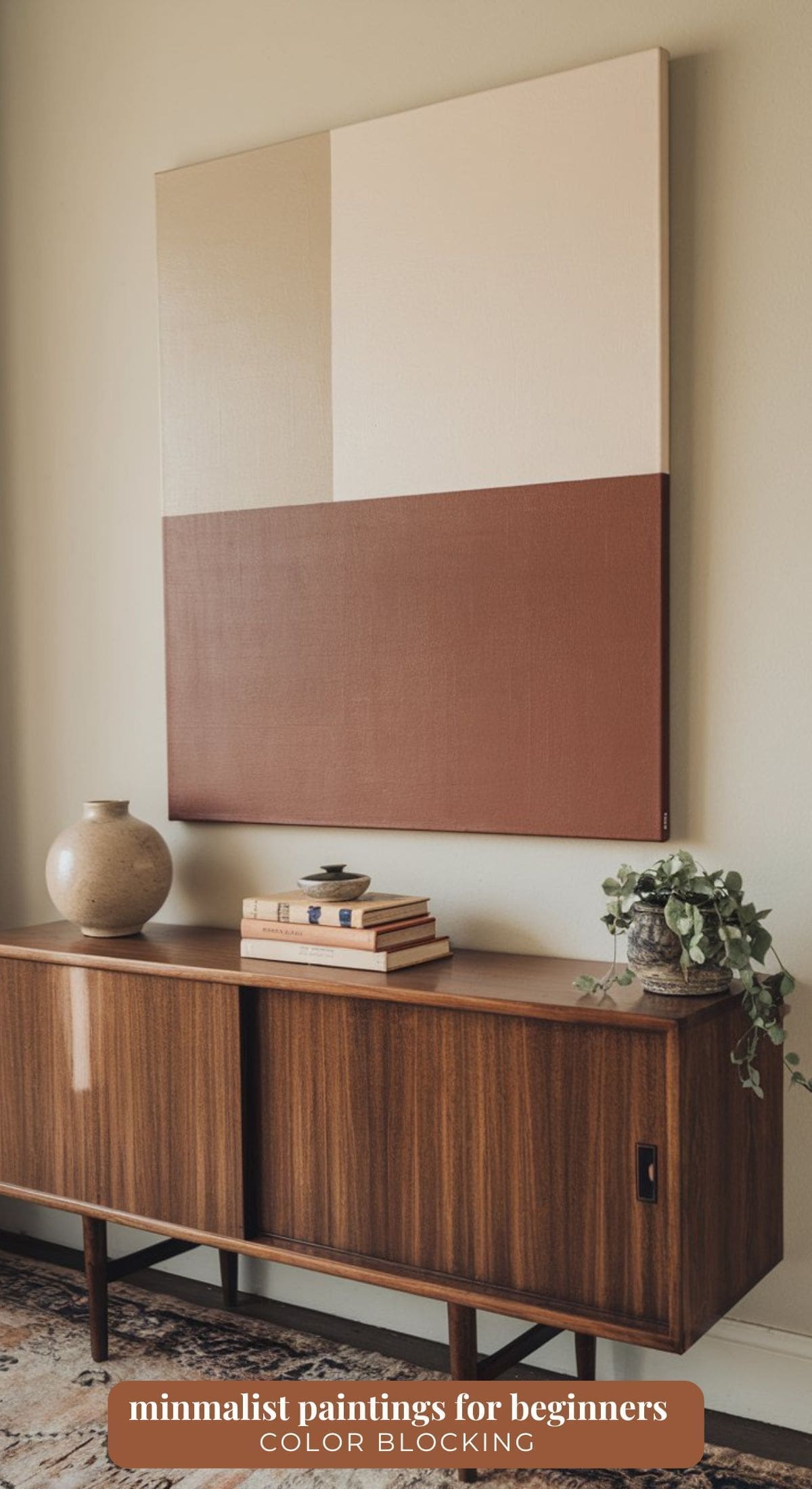
A super easy, high-end look with just 2 to 3 paint colors!
PRO TIP: If you like the colors in this painting, we would recommend using Burnt Sienna, Raw Sienna and Titanium Buff acrylic paint.
Here’s another (even easier option)….
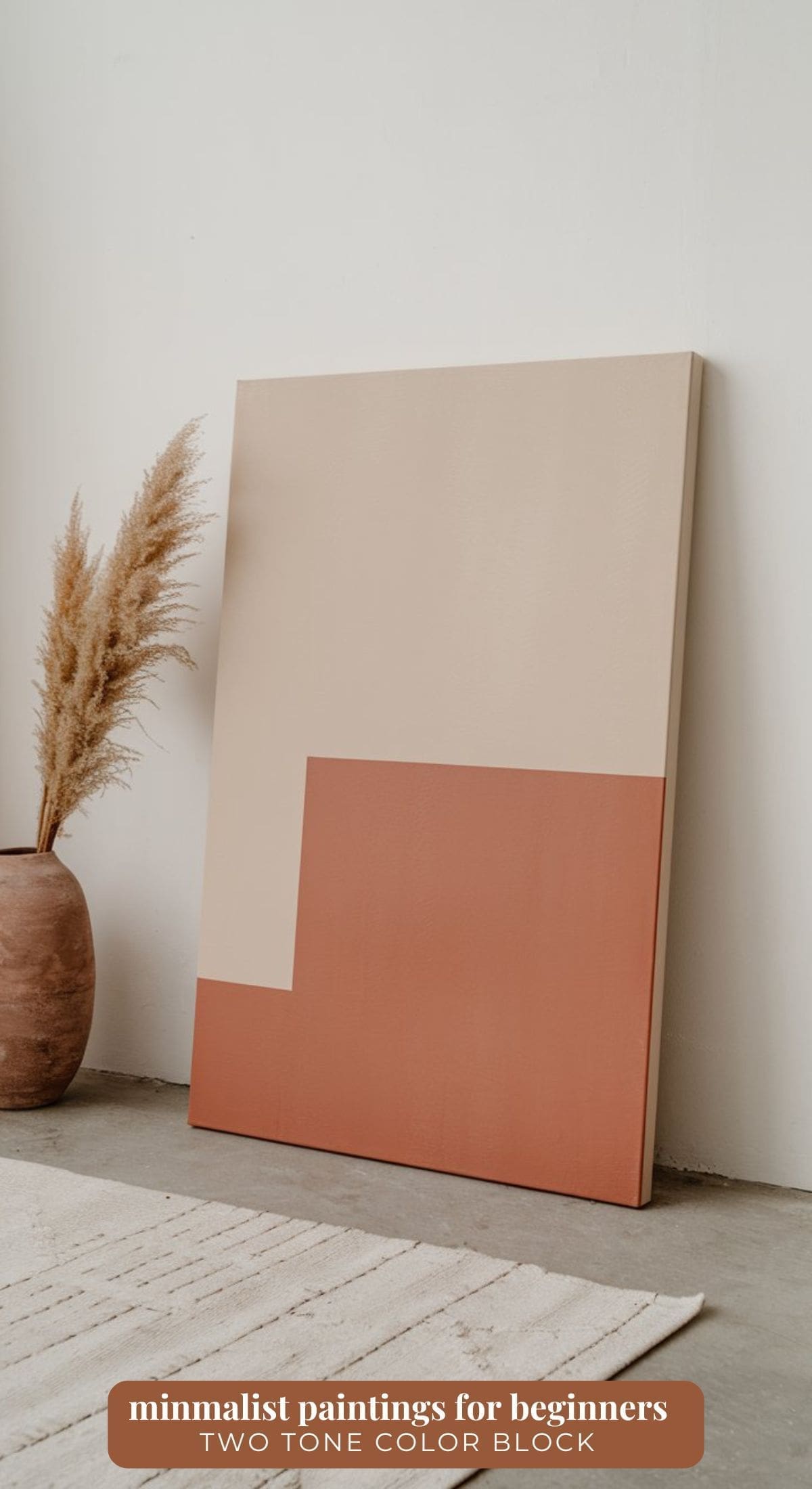
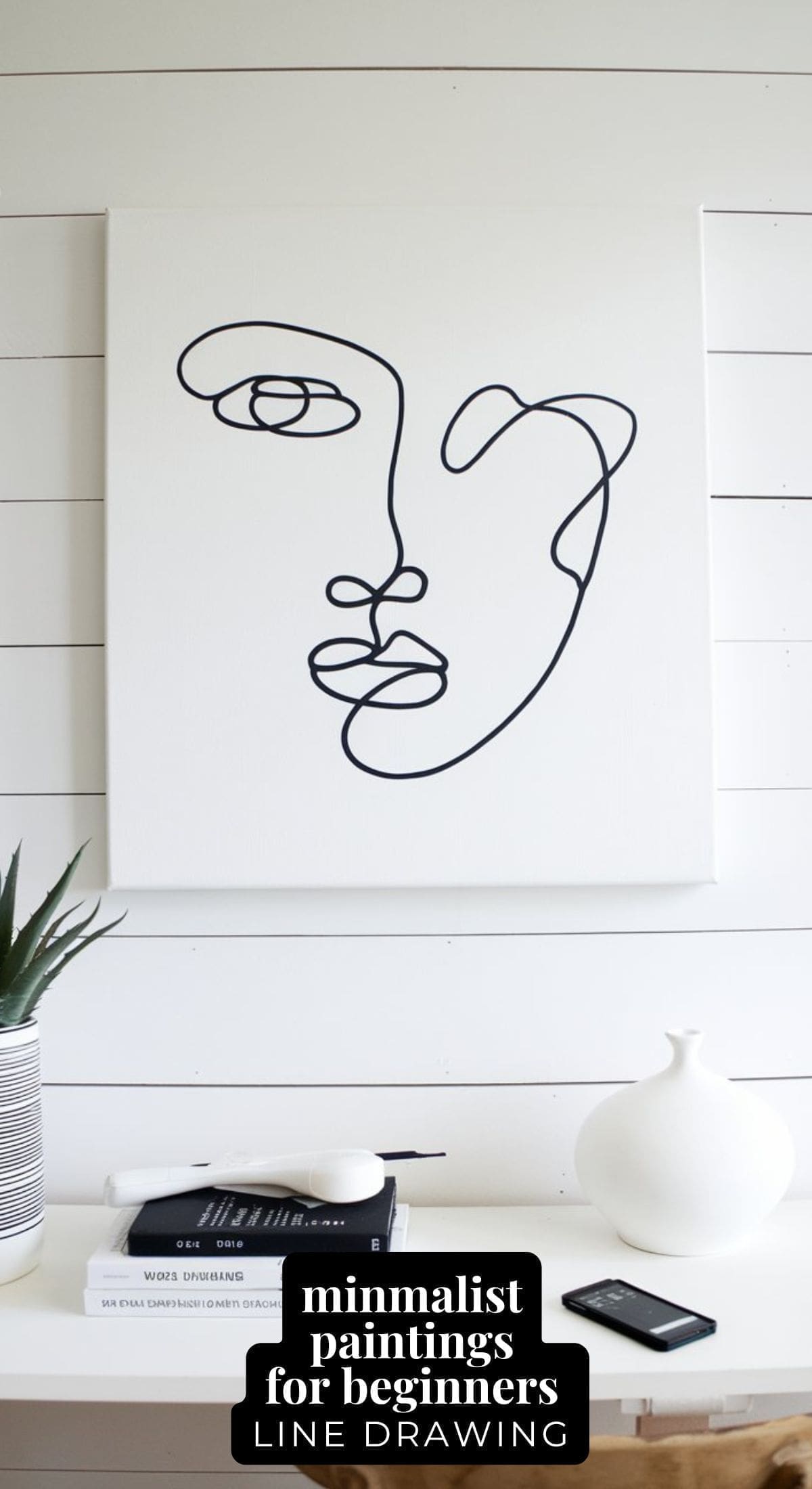
A single, continuous black line that forms a simple shape or face. Think elegant, effortless, and very Pinterest-worthy.
How to Create this Masterpiece:
PRO TIP: If you are too nervous about using a paint brush for this one, there are some fantastic paint pen options out there that will give you so much more control. My personal favorite are Posca pens. They come in various thickness levels, so I would try at least two to find one you like.

Geometric shapes in muted earth tones like terracotta, deep green, and soft beige. The clean lines and color-blocked sections create a striking yet understated design.
How to Create this Minimal Masterpiece:
PRO TIP: When you are finished with your painting, you can use a paint pen like this to highlight (and clean up) all the edges. It also adds a bit more dimension to your minimalist painting.
In this next example, things got a little nutty with the paint pen, so it’s not as “crisp” as I would have liked, but still a fun design.
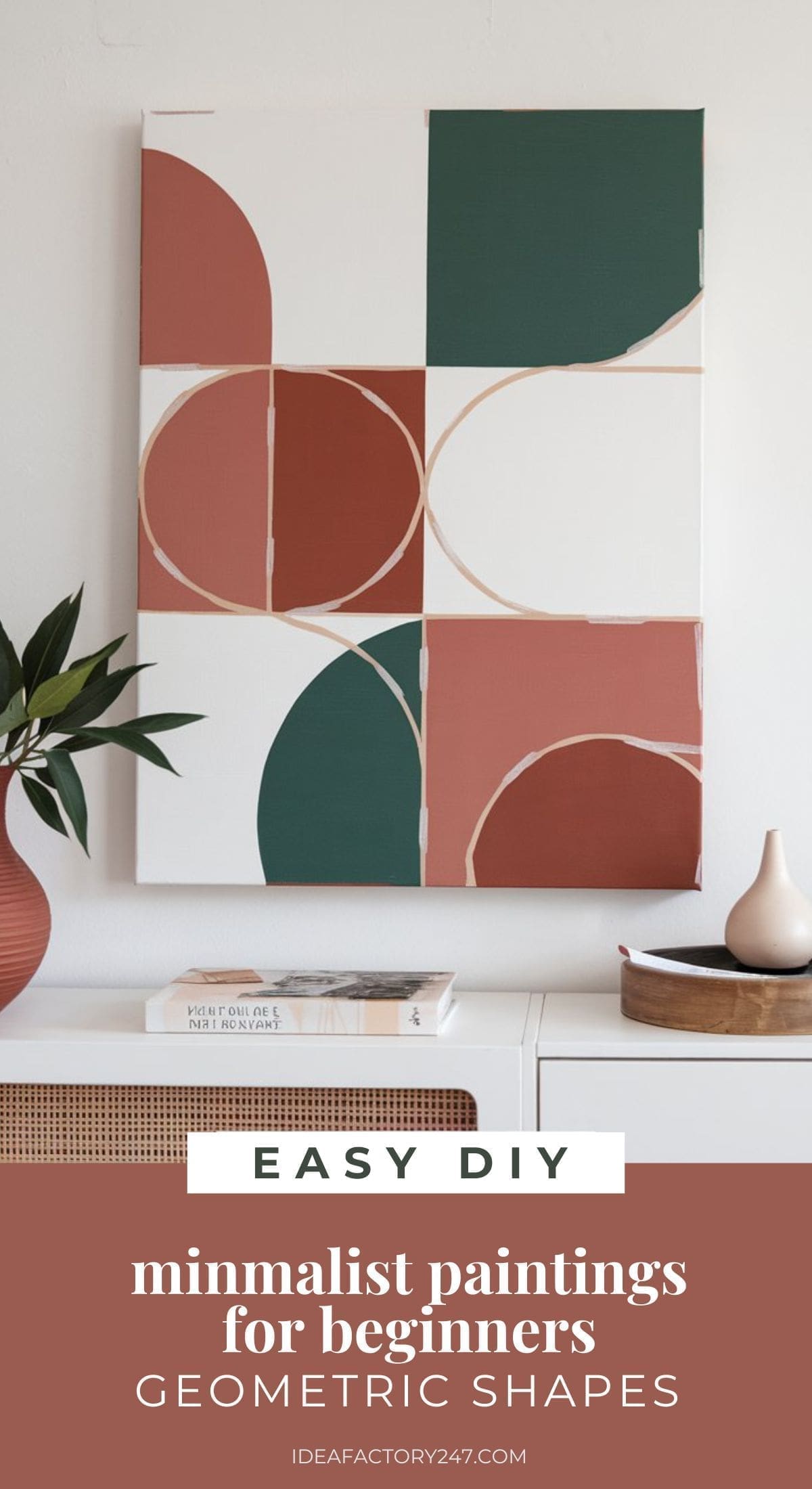
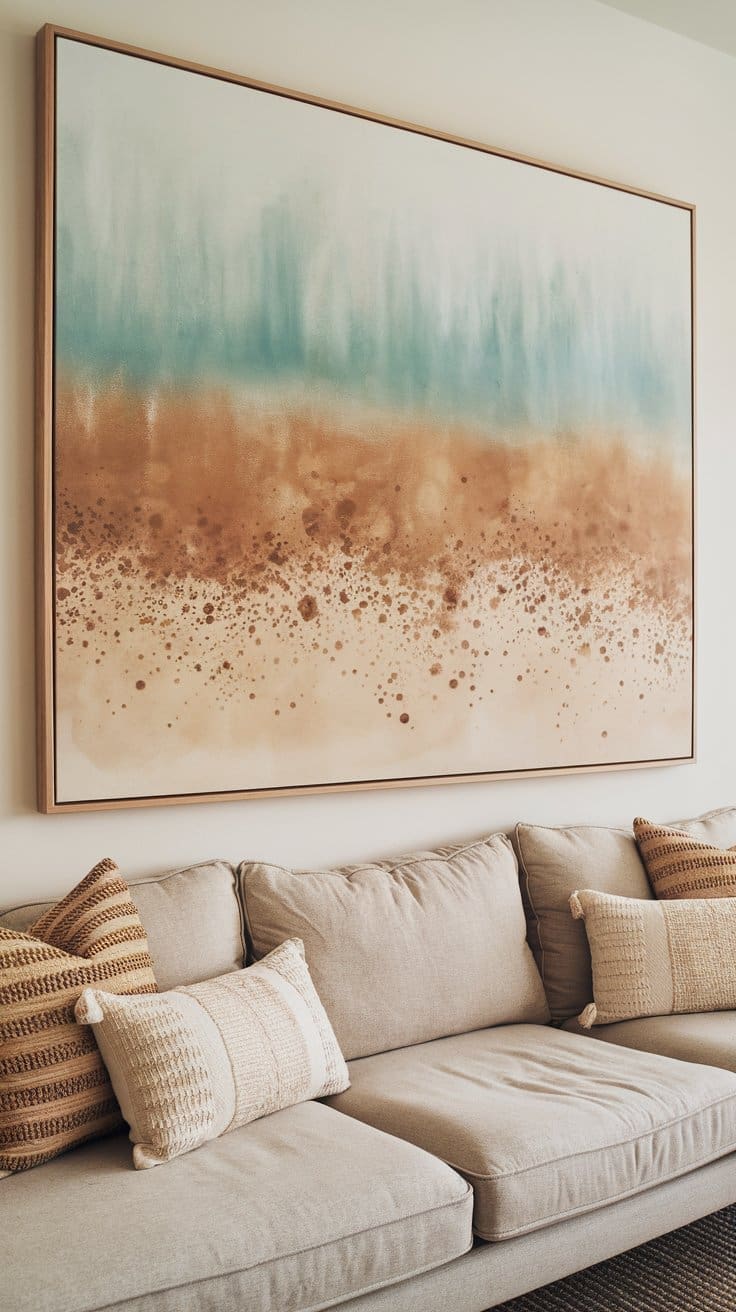
A modern, abstract take on a landscape, using soft blended tones for the background and dynamic paint splatter dots to add texture and movement.
How to Create It:
PRO TIP: To get the splatter like the example, get the paint fairly wet before dipping the toothbrush into it. It also helps if the paint on the canvas is still a little damp.
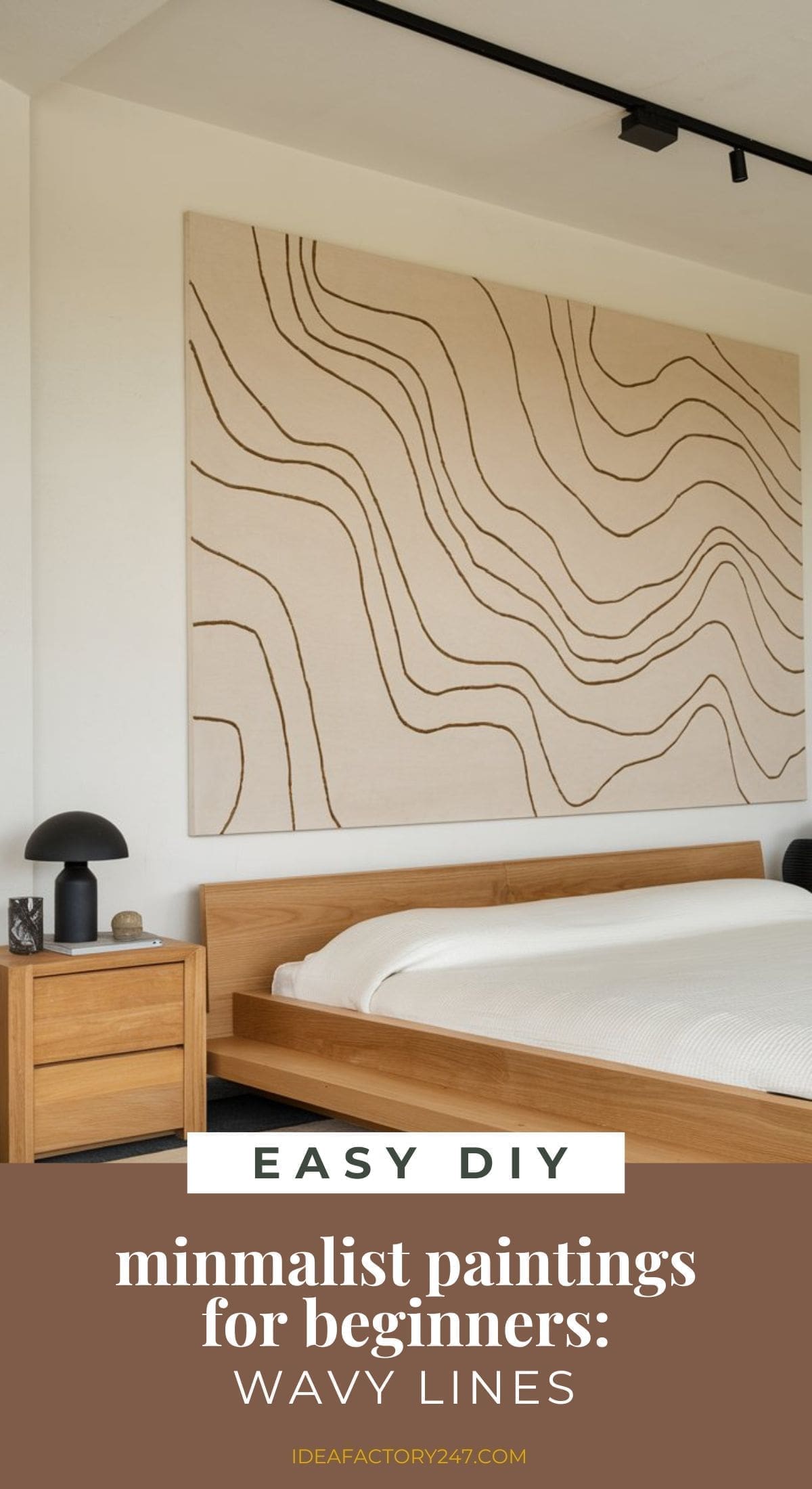
Super simple minimalist painting with wavy lines. Loosely represents wood grain.
How to Make this Painting:
Here’s another example for those of you who prefer a more minimalist look with thicker lines…
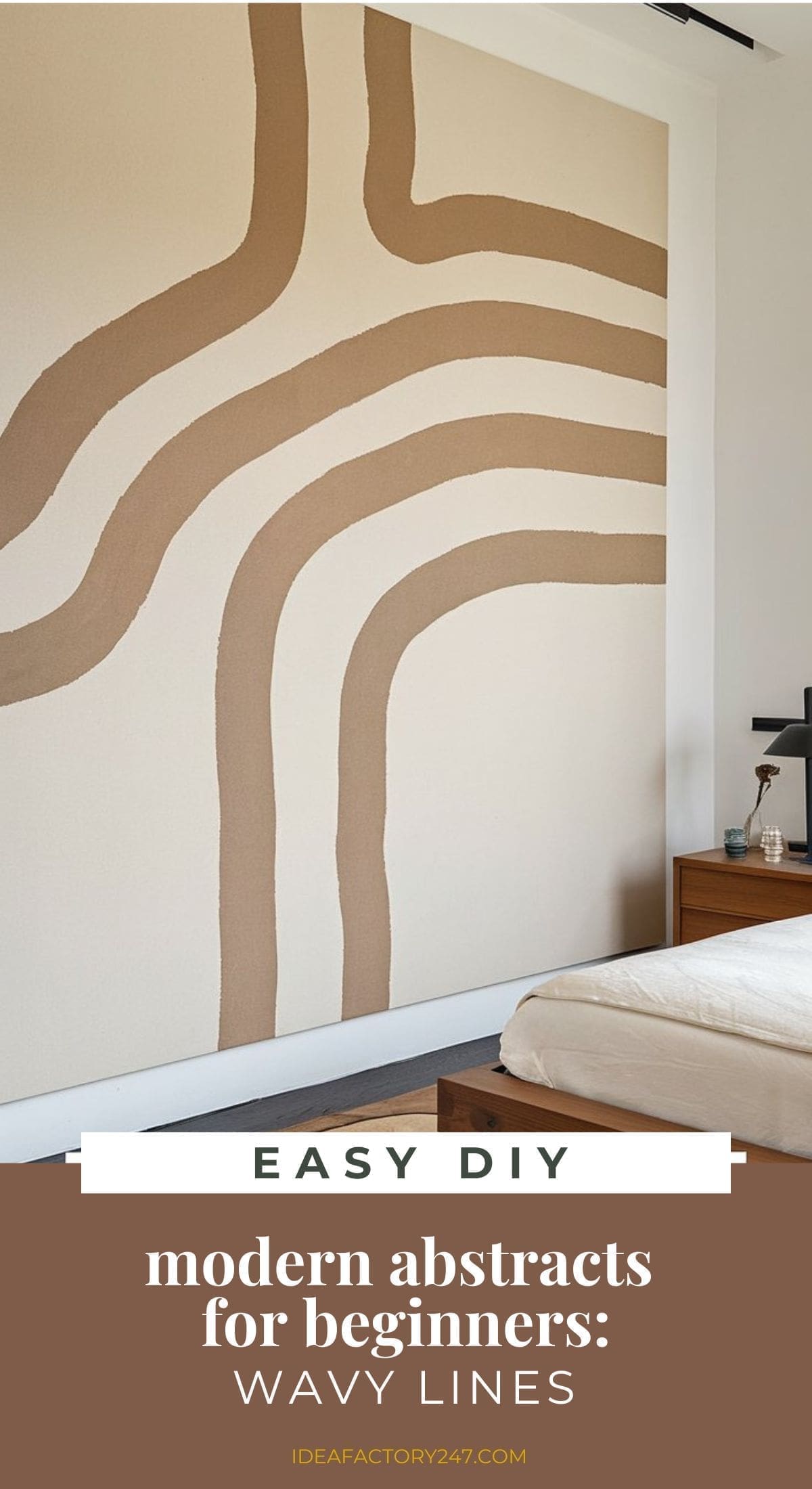

Description: Simple overlapping circles in muted earth tones, creating a balanced and calming design.
How to Create It:
PRO TIP: To get the overlap look on the circles, find acrylic paint that has a high transparency level. For example, Golden’s Green Gold is highly transparent as well as this yummy Brown Iron Oxide.
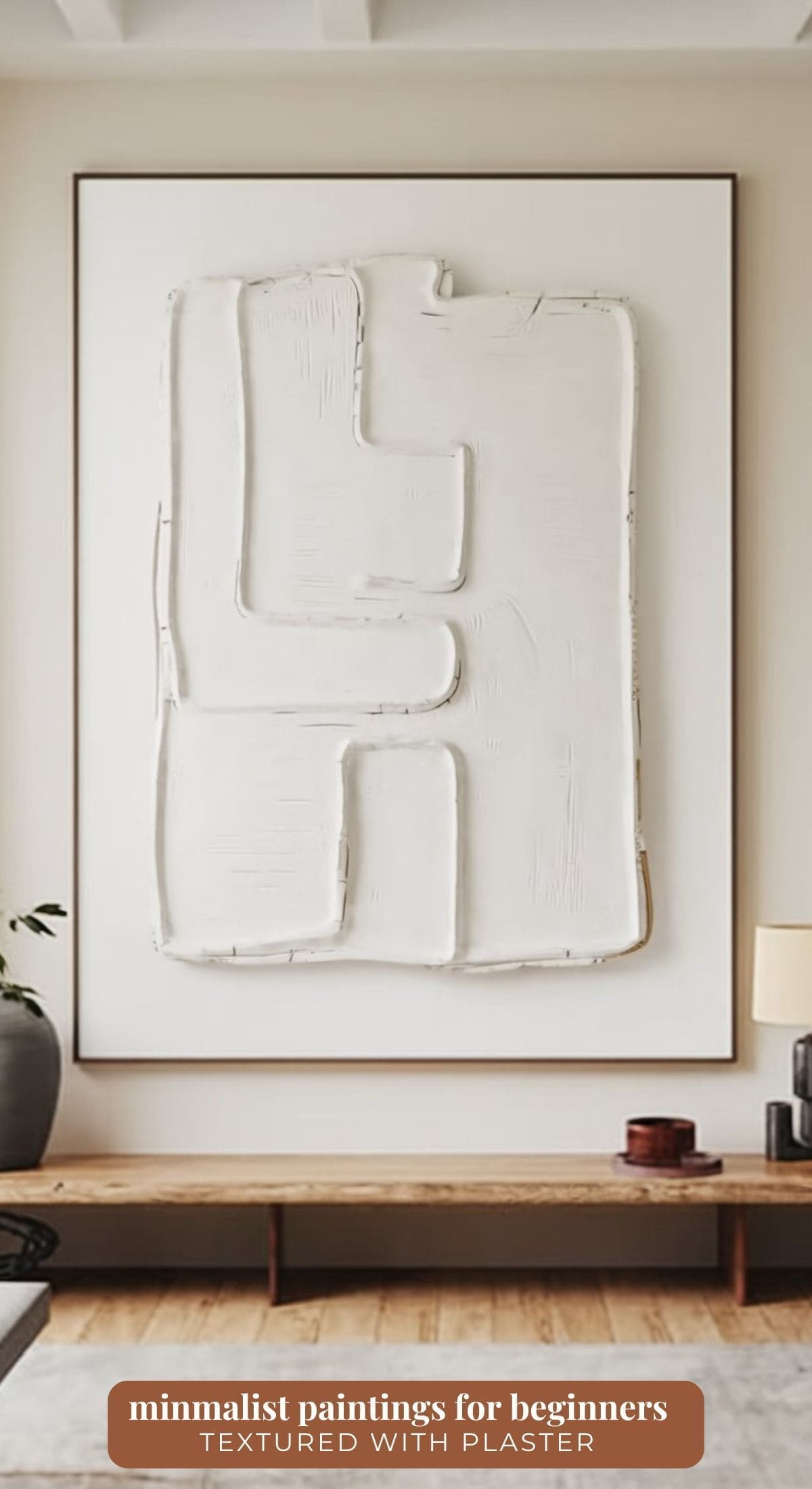
Description: A monochrome masterpiece with raised texture, adding depth and a luxe feel without using color.
How to Create It:
PRO TIP: In the past, I’ve used wall plaster along with the heavy body acrylic to get this textured effect. It works pretty well, you just can’t go too thick or it will easily start cracking. If you like the cracked look, that’s even better!
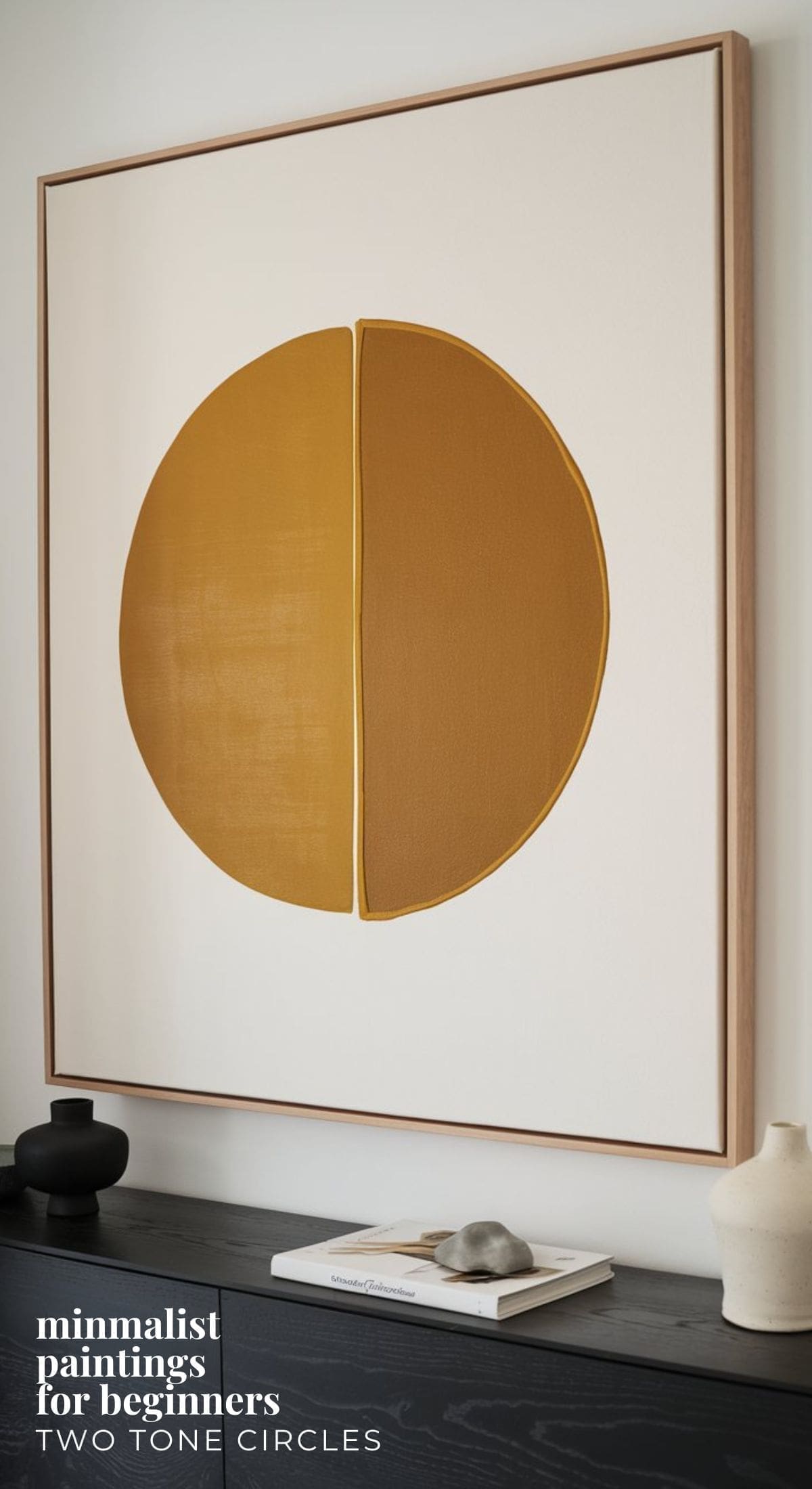
A bold, modern design featuring a half-circle in a single color for a striking yet understated effect.
How to Create It:
PRO TIP: If you like the colors in this painting, we would recommend using Yellow Ochre or Raw Sienna (or both!) acrylic paint colors.
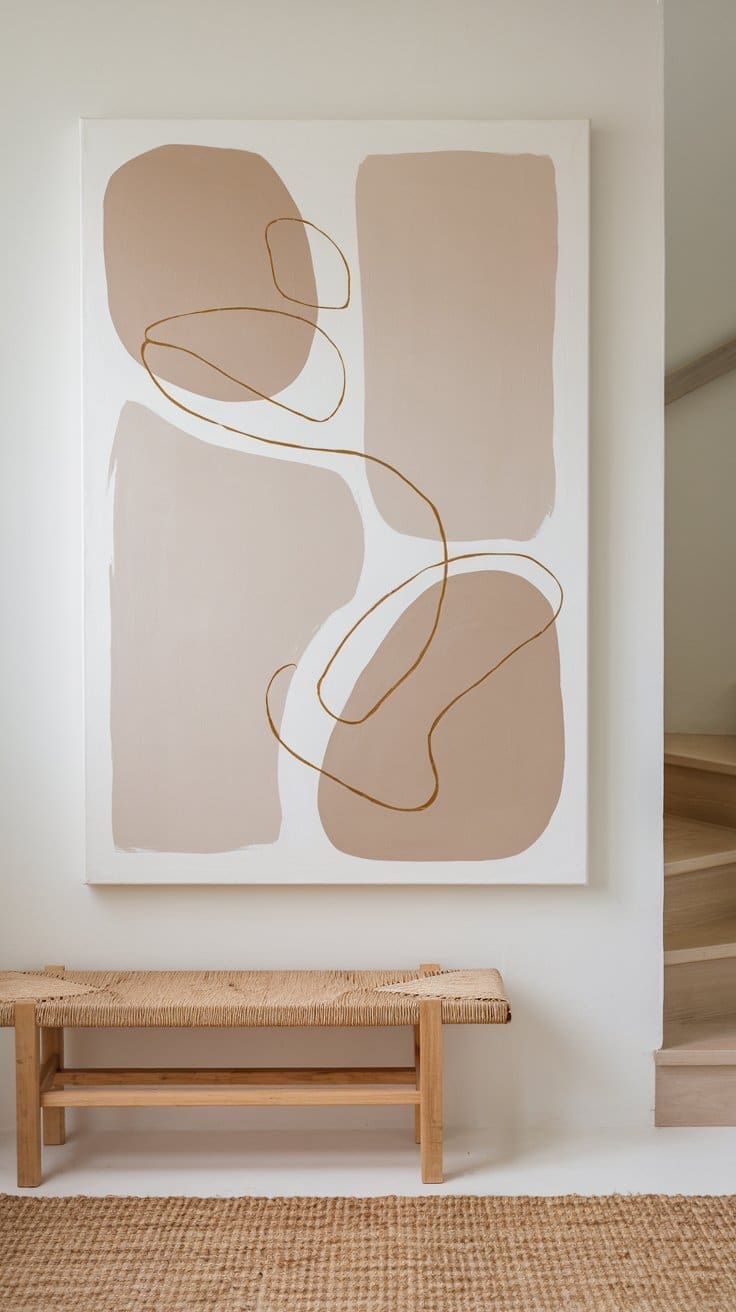
A minimalist take on abstract shapes by using negative space and a simple color palette.
How to Create this Painting:
FYI: After creating your painting, if the abstract shapes look a little blah, just take a paint pen or paint marker and draw some funky lines around the canvas. You have nothing to lose! You can easily paint over it if you don’t love the look.
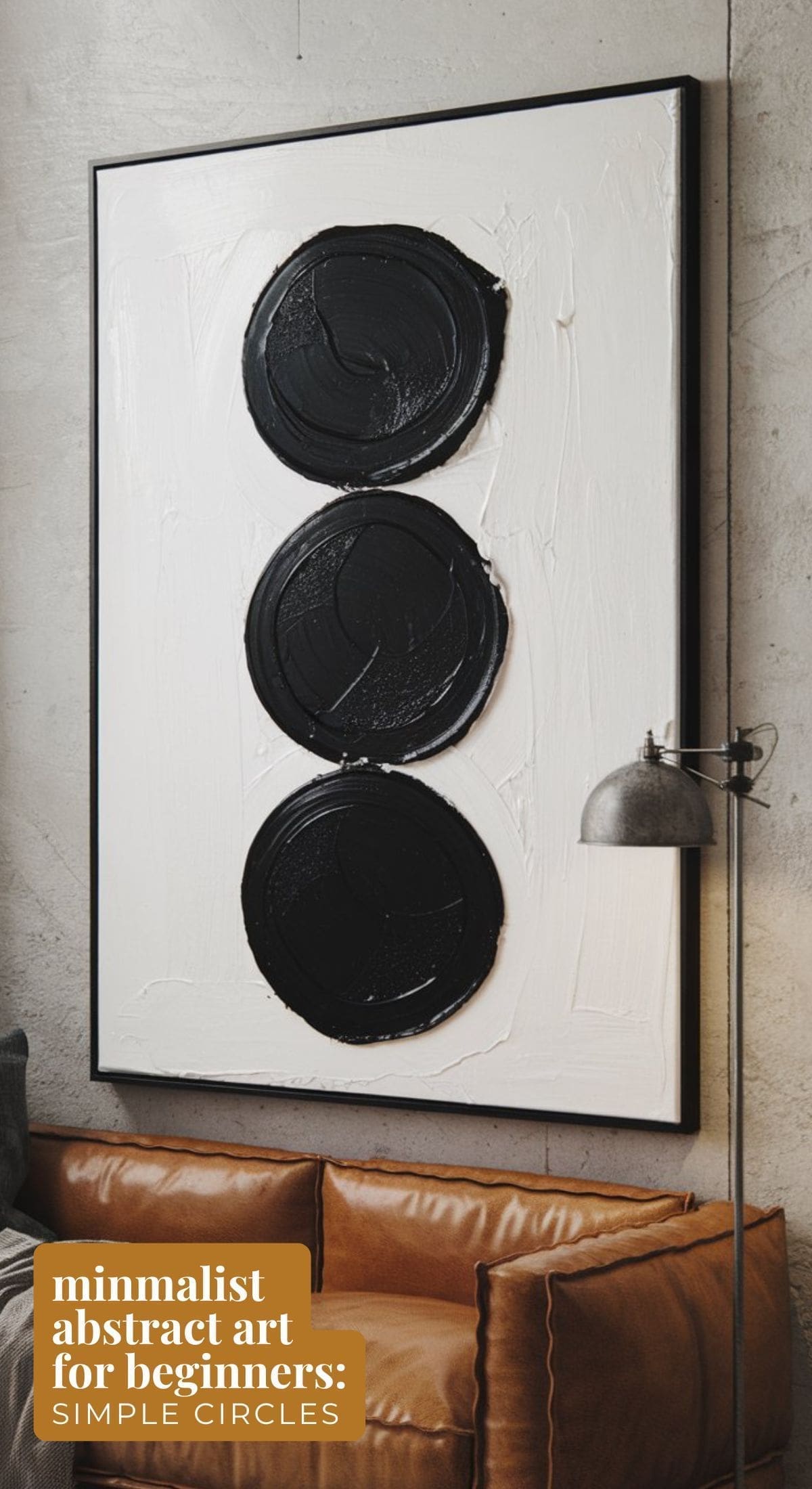
Three single dots on a blank canvas—because sometimes, the simplest designs make the boldest statements.
How to Create It:
PRO TIP: For added texture, I would recommend painting the entire canvas first with a white or creamy white color. Once that dries, you can can add your circles. You can also add clear texture paste to your paint to get that thicker look.
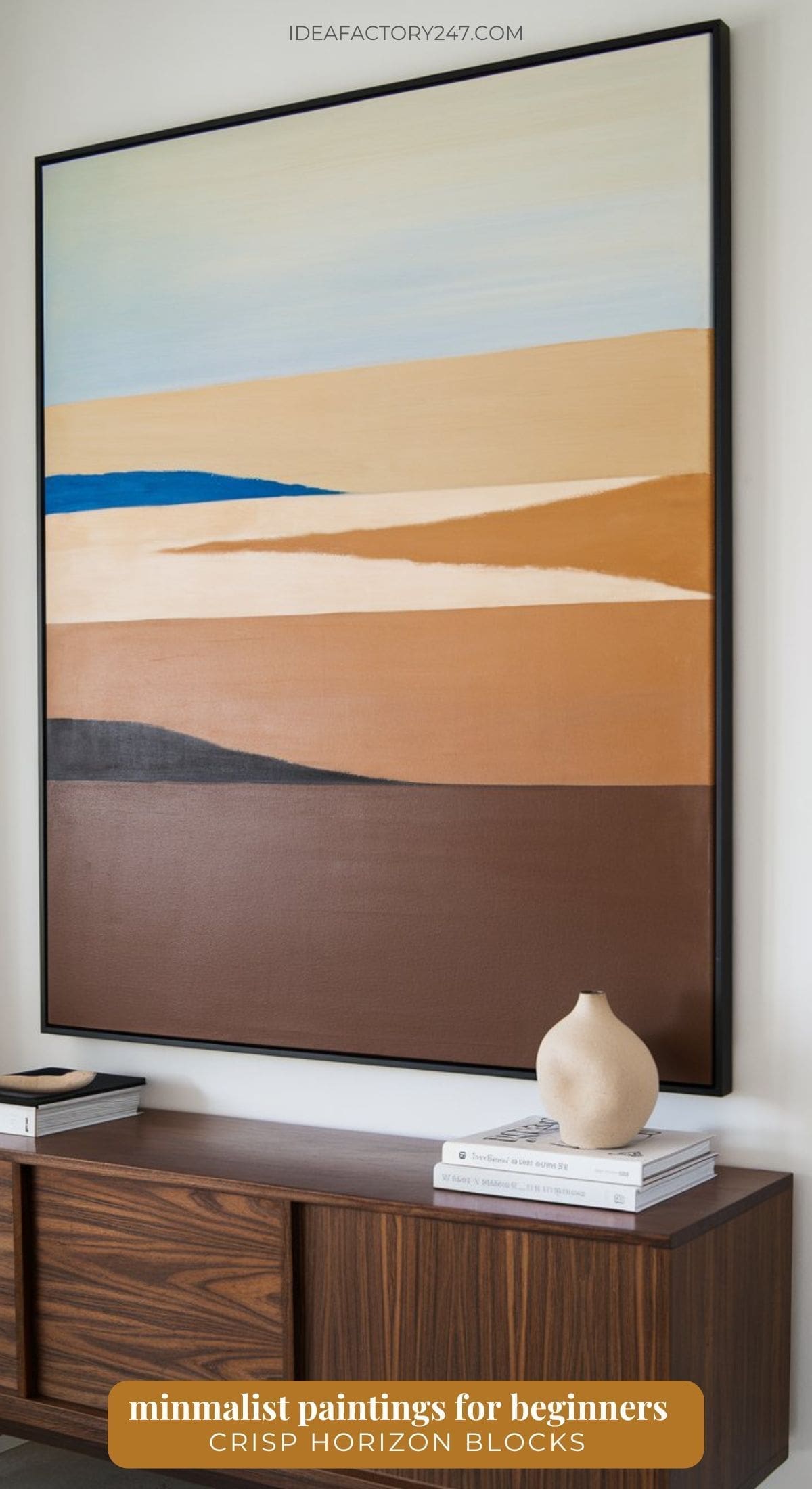
A bold, structured landscape using defined horizontal color blocks to create a minimalist yet striking scene.
How to Create It:

A single, bold brushstroke across a blank canvas—effortless, striking, and incredibly modern.
How to Create It:
PRO TIP: I don’t have a picture of it at the moment, but I’ve used an old fashioned mop head, dipped it in black paint, and swooshed it across the canvas. It took a few tries but I got one I loved. So if you are thinking you want a big (big) canvas, a regular paint brush may not work and you’ll need something like the mop to do the job!
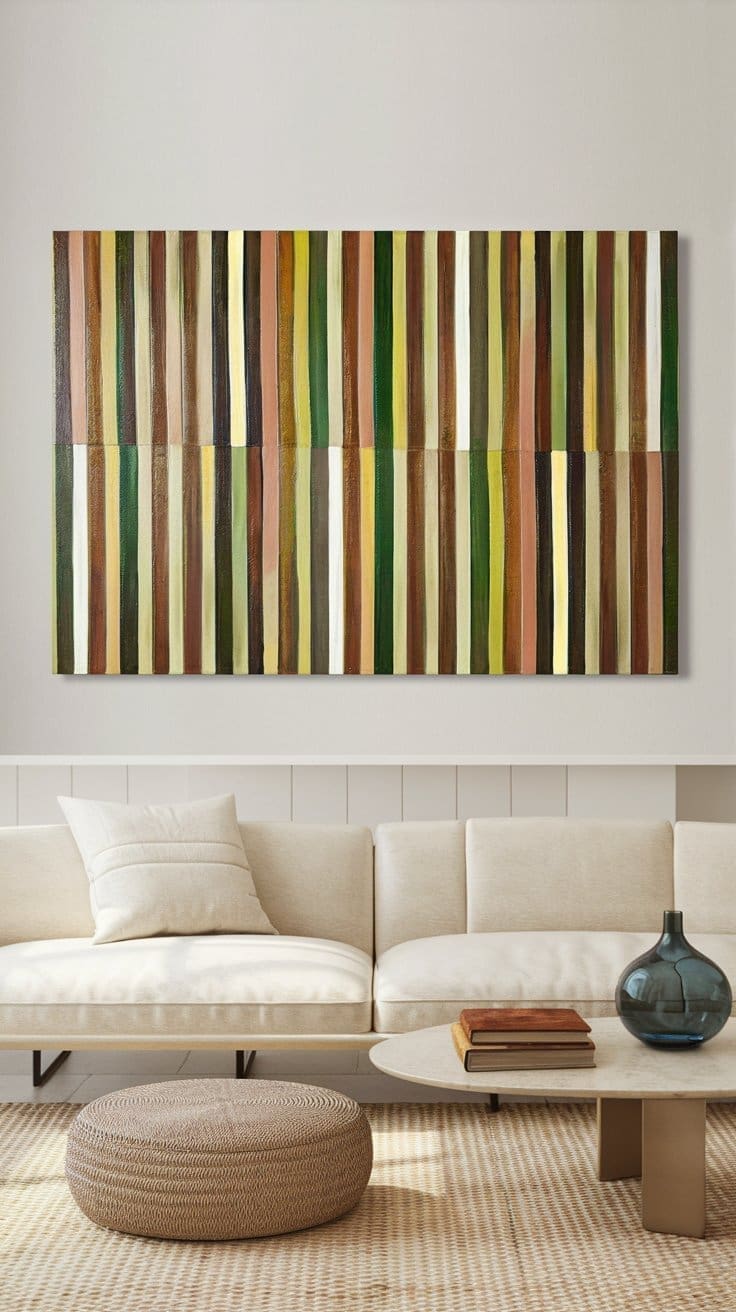
A simple composition of evenly spaced, parallel stripes for a clean and structured look.
How to Create It:

Description: A minimalist landscape featuring a simple horizon line with two or three blended colors to create a peaceful, natural scene.
How to Create It:
Please note: This website contains affiliate links. As an Amazon Associate, we earn from qualifying purchases at no additional cost to you.
.
Share this article via:

This website uses cookies to ensure you get the best experience on our website. View our Privacy Policy here.